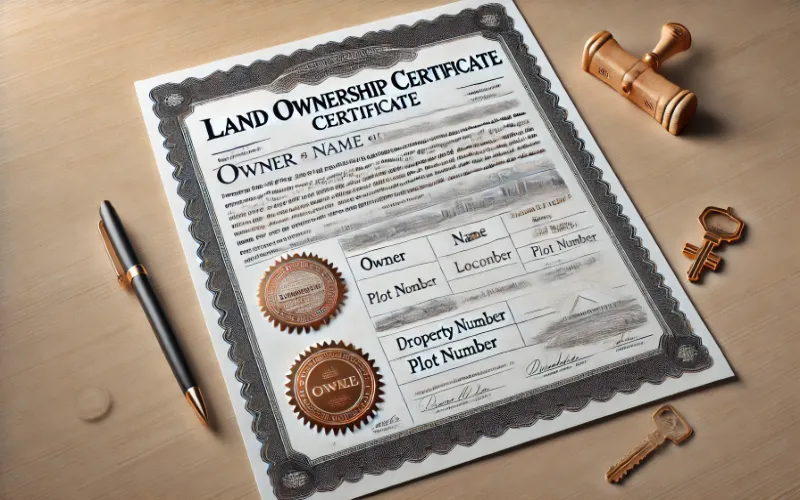Land records form the backbone of property ownership and revenue administration. A meticulously maintained land record system ensures legal clarity, prevents disputes, and aids in seamless property transactions. Among these vital documents, Fard holds a pivotal role in verifying ownership, facilitating transfers, and maintaining revenue records.
Land administration involves multiple officials, including the Patwari, Qanungo, and Tehsildar, each playing a distinct role in the maintenance and issuance of land records. Understanding Fard and its implications can help landowners, buyers, and stakeholders navigate the complexities of land transactions effectively.
Understanding Fard in Revenue
Fard is an official land document that certifies details about a property, including ownership, classification, and historical records. It serves as a legal proof of possession, essential in transactions such as selling, mortgaging, or inheriting land.
In revenue administration, Fard is indispensable, ensuring that land records remain updated and legally binding. Whether an individual is purchasing property, resolving a dispute, or verifying ancestral ownership, Fard serves as the primary document of authentication.
Types of Fard and Their Uses
The revenue department issues different types of Fard, each catering to specific needs. Some of the most commonly used types include:
- Fard Milkiyat – Establishes ownership rights over a property. It is required when selling land or obtaining a loan against it.
- Fard Inteqal – Reflects changes in ownership due to inheritance, sale, or gift transfers.
- Fard Haq Shufa – Issued in cases where pre-emptive rights apply, ensuring a rightful claimant can purchase the land before others.
- Fard Badar – Used to rectify inaccuracies or update details in land records, ensuring all modifications align with legal documentation.
Each of these variations serves a critical function in maintaining accuracy and transparency in revenue records.
Who Issues Fard and the Approval Process?
The issuance and maintenance of Fard involve multiple officials in the revenue hierarchy. The process follows a structured approach:
- Patwari – The primary custodian of village land records, responsible for preparing and maintaining land ownership documents.
- Qanungo – Supervises the work of multiple Patwaris, ensuring accuracy and consistency in land records.
- Tehsildar – A higher authority in the land revenue system, responsible for approving and verifying Fard requests.
To obtain a Fard, an applicant must:
- Submit a request at the revenue office with supporting documents.
- Pay the prescribed government fee.
- Undergo verification by the Patwari and approval by the Tehsildar.
- Receive an officially stamped and signed copy of the Fard for legal use.
Importance of Fard in Revenue and Land Administration
The significance of Fard extends beyond mere documentation. It plays a crucial role in:
- Dispute Resolution – Acts as primary evidence in land ownership conflicts.
- Land Taxation – Helps authorities assess and collect revenue based on property records.
- Government Acquisitions – Ensures proper compensation and legal clarity in cases of land requisition.
- Financial Transactions – Required for securing loans and legal property sales.
An up-to-date Fard safeguards the rights of landowners and helps streamline administrative procedures.
Common Challenges and How to Resolve Them
Despite its importance, obtaining a Fard can sometimes be a cumbersome process due to:
- Bureaucratic Delays – Long processing times due to administrative inefficiencies.
- Errors in Records – Incorrect spellings, missing survey numbers, or outdated ownership details.
- Need for Fard Badar – Situations where records require correction or updates.
To overcome these hurdles:
- Landowners should periodically verify their land records.
- Engage legal professionals in cases of disputes or complications.
- Follow up diligently with revenue officials to expedite processing.
Proper documentation and timely action can prevent unnecessary delays and legal complications.
Conclusion
Fard is a cornerstone of land revenue administration, ensuring legal clarity, ownership authentication, and financial security. Its role in dispute resolution, property transactions, and government acquisitions makes it indispensable for landowners and stakeholders.
By understanding the types of Fard, the process of obtaining it, and the importance of record accuracy, individuals can navigate land administration smoothly. Regular updates and timely corrections through Fard Badar can further prevent disputes and ensure seamless transactions.
A well-maintained Fard not only secures individual property rights but also contributes to a transparent and efficient land revenue system.


Leave a Reply